I was born in Tongxiang, Zhejiang Province, a small county located in the hinterland of the Hangjiahu Plain in northern Zhejiang Province. It has a distinct climate and beautiful environment, and is known as the “Home of Silk”.

The unique geographical environment is very suitable for the growth of mulberry trees and silkworms.
In the past, basically every household in our village raised silkworms.
My family is no exception. The skills of growing mulberry, raising silkworms, peeling cocoons and making silk passed down from the older generation have long been deeply engraved in our hearts.
I have been raising silkworms with my parents since I was a child. Today I will share with you the whole process from silkworm eggs to silk quilts.
A good mulberry silk comforter is inseparable from a good mulberry garden. The protein content in mulberry leaves is very high, and silkworms can spin better silk only if they eat well.
My mulberry garden grows Rumulus mulberry, which is characterized by large leaves, thick and juicy flesh. It is the best feed for silkworms. Since it is in a rural area, it is basically farmyard manure.
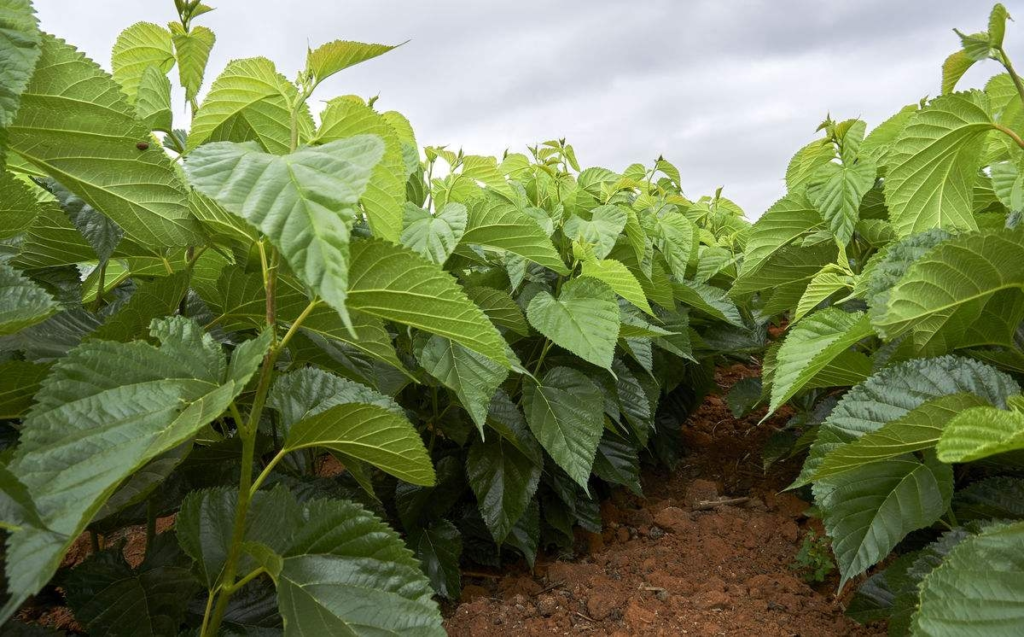
Whenever the sun rises and the dew on the mulberry leaves is dried and evaporated by the sun, we sericulture farmers will start to collect mulberry leaves. The mulberry leaves at this time are the best.
For us silkworm farmers, the hardest part is picking mulberry leaves. Silkworm babies have very strict food requirements.
When picking, you need to choose good mulberry leaves. The leaves are yellow with green in color, have no pests, and are not old or tender. If they are too tender, they will have too much water. Silkworms will have diarrhea after eating them. Silkworms will not like to eat mulberry leaves that are too old. .
I don’t know if you have heard of the word “cannibalization”. It is used to describe that silkworm babies are very, very edible. In just a few days, the body can grow geometrically. Two bags full of mulberry leaves like this are only enough for one. Zhang Can had a meal.

Under normal circumstances, it takes about half an hour to pick a bag of high-quality mulberry leaves. Silkworms need to be fed more than three times a day. The time must be strictly controlled, otherwise it will affect the development of the silkworms and lead to failure to form cocoons. Therefore, no matter it is windy or rainy, every day Picking mulberry leaves is a must.

After about 2-3 hours, the silkworm ants will start eating. When feeding silkworm ants, you need to chop the mulberry leaves into small pieces to make it easier for the silkworm ants to eat.


The silkworm baby eats a lot of mulberry leaves, grows very fast, and its body color will gradually fade. When its appetite gradually decreases and it is completely fasting, the silkworm will no longer move, as if sleeping. We call this stage “sleep”. The silkworm appears to be motionless, but it is actually preparing for shedding. After shedding, the silkworm enters a new age.

From silkworm ants to cocoons, they need to undergo a total of 4 times of shedding.
From the time when silkworm ants shed their skin for the first time, they become first-instar silkworms, then second-instar silkworms, third-instar silkworms, and fourth-instar silkworms.
The last molting is called the Great Sleep, and the whole cycle lasts for about 40 days, and the silkworm becomes the fifth instar (mature silkworm).
Silkworms at this time are very fragile. The silkworm room must be kept disinfected and ventilated. After entering the fifth age, the food intake of silkworms will increase greatly. At this time, it is necessary to ensure that the silkworms are well fed, otherwise they may become ill or fail to form cocoons.
By the end of the fifth instar, the appetite of the mature silkworm will decrease. When it stops eating completely, the body of the mature silkworm will appear transparent and yellow, and its head will be raised and swayed left and right to look for a place to form a cocoon.

Put the cocoon prepared for the silkworms in advance, and the silkworms will spin silk and form cocoons in the cocoon.
The ripe cocoon will first spin the silk on the cocoon to form a cocoon net. After the cocoon net is knotted, the silk will continue to be spun in an S-shaped manner. At this time, the outline of the cocoon (cocoon coat) begins to appear. After the cocoon coat is formed, the cocoon will appear A “C” shape continues to spin silk, and the silk spinning has also changed from the original S shape to an ∞ shape.
At this time, the mature cocoon will spin a large amount of silk to form a silkworm cocoon. Of course, not every silkworm can successfully spin cocoons. Silkworms with pus disease and stiffness will cause cocooning failure. Rough worms can be dried and sold as medicinal materials.


Once the silkworms have finished spinning their cocoons, you can start sorting the cocoons. The prices of different cocoons vary greatly.
Basically can be divided into three categories
Double cocoon (a cocoon formed by two silkworm babies together (twins));
on cocoon;
Secondary cocoons, macular cocoons (caused by illness or unhealthy condition of silkworms when they spin cocoons).
Double cocoons are the raw material for making silk comforter, but they are also very rare. There are about 10 double cocoons in 100 cocoons.
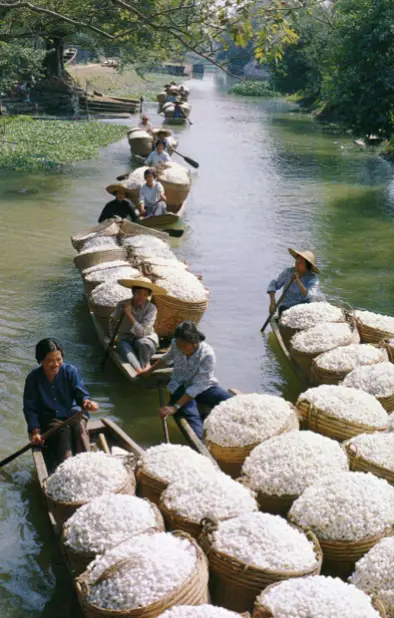
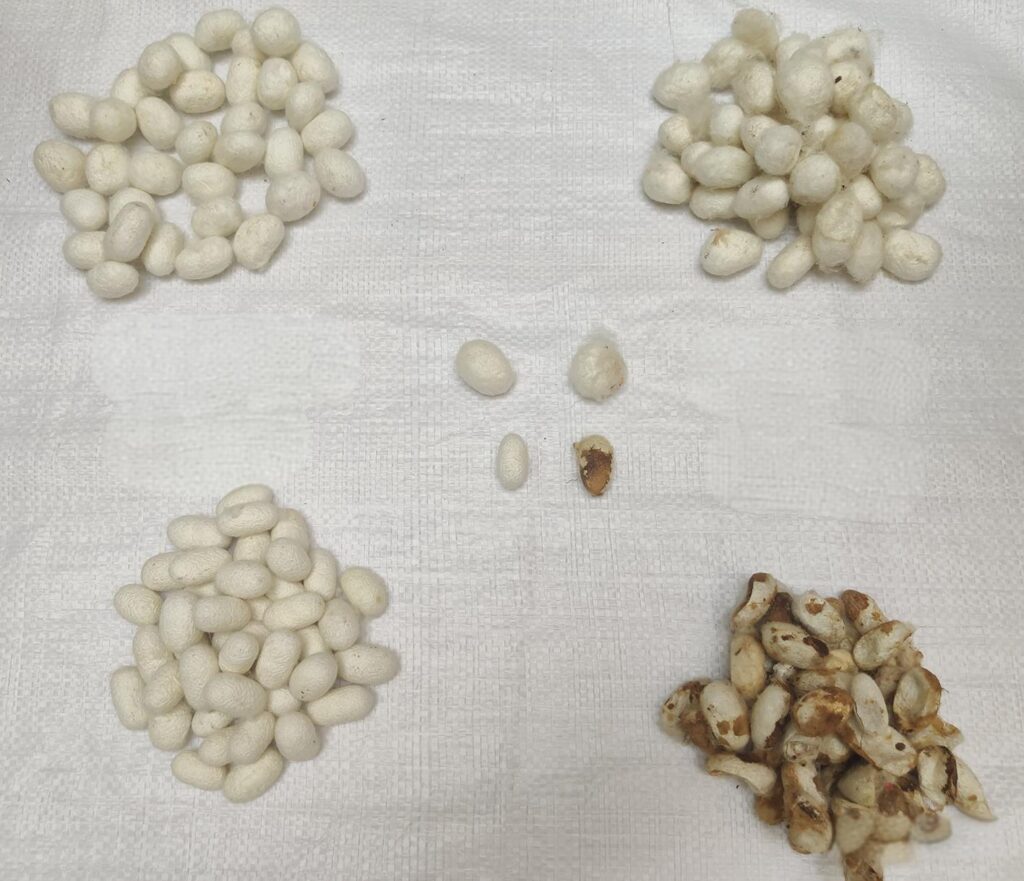
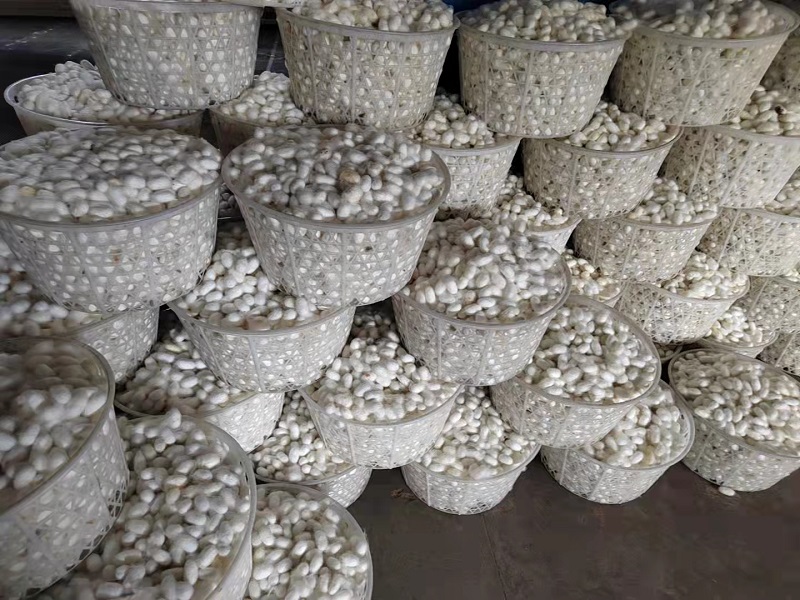
After selecting the cocoons, it’s time to start making the silk comforter.
The process of making a good bed of mulberry silk is very complicated.
The selected cocoons must first be boiled and degreased. This is a very important process, which directly affects various indicators of silk.
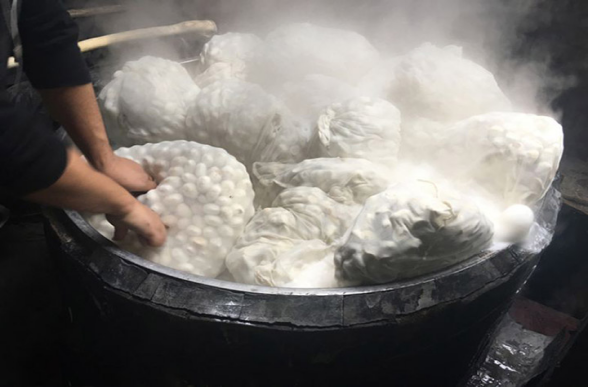
After cooking the cocoons, it is time to peel them off. Each cocoon has to be peeled out with fingernails, and the hands have to be soaked in water all day long. Now the old silkworm lady is willing to do this job.
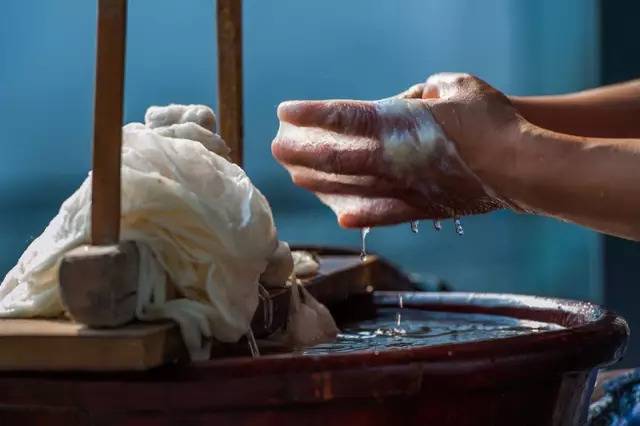
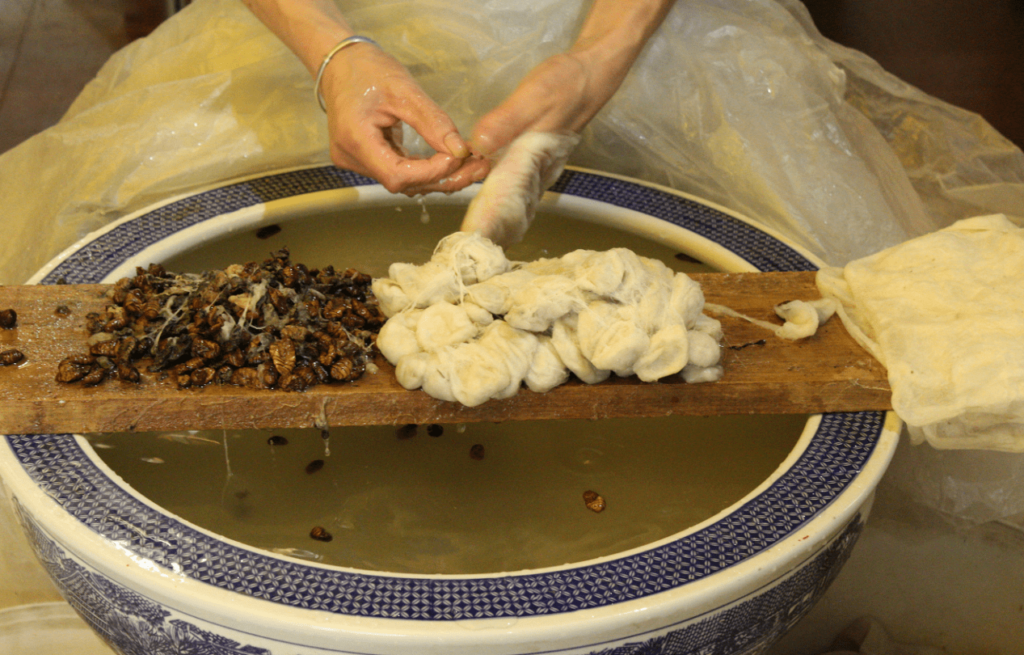
Opening cotton is a laborious job. It takes a lot of effort to put silk on a bamboo bow-shaped tool and open it into small cotton pockets.
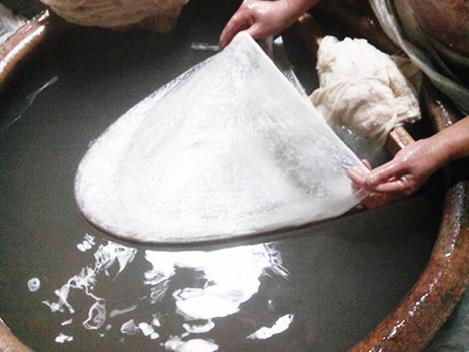
After opening the cotton, it is necessary to hang it up to dry, using the ultraviolet rays of the sun for drying. We in Jiangsu and Zhejiang often rain, so we just have to wait and see.
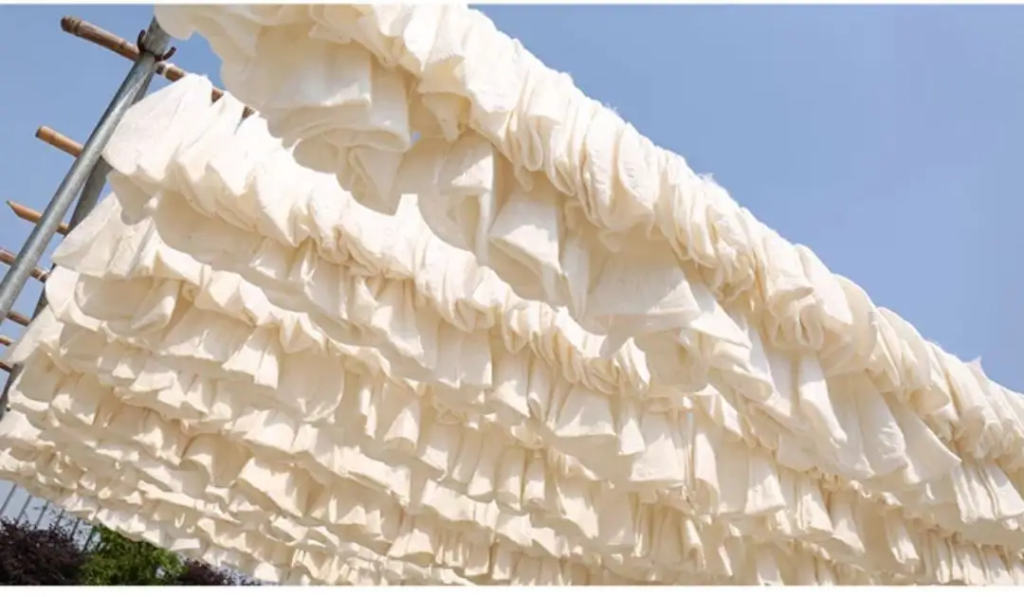
After drying the silk, four experienced silkworm ladies will draw it one by one. A 3-pound silk comforter needs to be drawn more than 120 times, which basically takes more than an hour to complete.

OK! A mulberry silk quilt is completed!